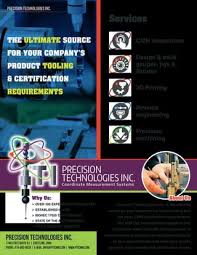Technology is defined
Innovation is characterized by a blend of variables, generally impacted by human development, cultural necessities, and the instruments that are created to address explicit difficulties. Here are the primary supporters of how innovation is characterized:
Designers and Pioneers: The people who make and foster new instruments, cycles, and techniques frequently shape innovation straightforwardly. Innovators and architects work to foster reasonable arrangements that in the end characterize what is conceivable and helpful.

Thomas Edison (1847-1931) – Electric Power and Sound Recording
Edison is known for designing the phonograph, the film camera, and pragmatic electric lights. His foundation of electrical power circulation networks laid the basis for present day electrical matrices.
Nikola Tesla (1856–1943) – Electricity and Wireless Transmission
Tesla fostered the rotating flow (AC) power supply framework, which turned into the norm for electrical power. He likewise spearheaded remote correspondence and longed for remote energy move.
Alexander Graham Bell (1847–1922) – Telephone
Ringer is credited with designing the primary pragmatic phone. His developments in media communications progressed both individual and business correspondences and established starting points for present day correspondence organizations.
Marie Curie (1867-1934) – Radioactivity and Medication
Curie was a physicist and scientific expert who found the components polonium and radium. She spearheaded research in radioactivity, prompting propels in disease treatment and thermal power.
Henry Ford (1863–1947) – Automobile Mass Production
Portage reformed transportation and assembling by fostering the sequential construction system for large scale manufacturing. This development made vehicles reasonable for the typical individual, essentially influencing modern practices.
Wright Brothers (Orville and Wilbur) – Aviation
They developed and fled fueled, controlled plane in 1903. Their advancement made the way for present day flight, changing transportation and worldwide availability.
Steve Jobs (1955–2011) and Steve Wozniak (1950–) – Personal Computing and Electronics
Fellow benefactors of Mac Inc., Occupations and Wozniak reformed individualized computing with the Apple I and II and later with the Mac. Occupations’ work on items like the iPhone and iPad changed customer gadgets and affected plan, innovation, and media ventures.

Tim Berners-Lee (1955–) – World Wide Web
Berners-Lee created the Internet in 1989. His creation reformed admittance to data and correspondence, significantly changing society by making data unreservedly available to the world.
Scientists and Researchers
Logical investigation prompts mechanical progressions, and frequently, fundamental exploration uncovers information that later turns into the reason for new advancements. Scientists in different fields (physical science, science, software engineering, and so on) drive the central figuring out that upholds mechanical turn of events. It seems as though you may be alluding to researchers and scientists. Could you like more data on a particular field of exploration, remarkable researchers, or maybe a specific subject inside science? Go ahead and give more subtleties!
Society and Culture
Society shapes innovation by figuring out what is esteemed, required, or focused on. Social requirements and cultural issues impact what sorts of innovation are created, as well as how these advancements are utilized.
Cultural Needs
Innovations are frequently evolved to address explicit necessities that emerge inside a culture. For instance, in social orders where horticulture is the foundation of the economy, developments like high level cultivating hardware or water system frameworks are focused on. In metropolitan social orders, advances for transportation, correspondence, and accommodation, (for example, cell phones and electric vehicles) become more focal.
Societal Problems
Cultural Issues: Innovation is as often as possible intended to tackle explicit cultural issues. For example, during the modern transformation, innovative headways, for example, the steam motor were basic for tackling issues connected with work, creation, and transportation. Additionally, in present day times, advancements for sustainable power are being created to address environmental change and natural worries.
Ethics and Values
The moral structure and upsides of a general public impact how innovation is applied and directed. In certain societies, security and individual freedoms might shape the improvement of advanced advances (like information assurance regulations and protection guidelines), while different social orders might put less accentuation on these elements.
Access and Inclusion
Social and cultural factors additionally influence how innovation is made available to various gatherings. This incorporates issues connected with the computerized partition, where a few gatherings might have more admittance to innovation than others due to monetary, instructive, or geological variables.
Innovation and Trends
Social patterns, like an emphasis on supportability or wellbeing, can drive development. Advances, for example, electric vehicles, plant-based food sources, or wearable wellness trackers are instances of developments that arose due to cultural interest in environmentalism, wellbeing, or wellness.
Businesses and Industries

Organizations and enterprises assume a colossal part in characterizing and scaling advancements by putting resources into exploration, improvement, and creation. They frequently conclude which innovations become broadly accessible and open in light of market interest and productivity.
Enormous organizations frequently have the assets to finance state of the art research, employ top ability, and fabricate the fundamental framework for large scale manufacturing, making new advancements available to the more extensive public. Besides, market interest and productivity are key drivers — organizations plan to put up items for sale to the public that have a high potential for progress, both regarding buyer reception and income age. Accordingly, they can impact which advances become standard by guaranteeing that they address customer issues and can be scaled effectively.
Moreover, these organizations can shape the business scene by making associations, forming guidelines, and some of the time in any event, driving or characterizing industry principles. The choices made by organizations in key areas like medical care, tech, energy, and assembling can significantly affect mechanical access and the speed at which new developments arrive at society.
Without a doubt, associations frequently assume a urgent part in molding ventures and the more extensive business scene. Through essential associations, campaigning for explicit guidelines, and in any event, characterizing best practices or norms, they can impact the heading of whole areas. For example:
Medical services: Organizations in medical services can decide the speed at which new therapies, advancements, and medications are embraced by society. Their innovative work (Research and development) ventures and choices around organizations with administrative bodies straightforwardly influence admittance to advancements and general wellbeing results.

Innovation: In tech, organizations like Apple, Google, and Microsoft frequently set industry norms for everything from programming plan to information security. Their decisions with respect to interoperability, protection, and advancement impact buyer encounters as well as shape the improvement of worldwide innovation foundation.
Energy: Enormous energy organizations frequently direct the speed at which sustainable advancements are incorporated into public matrices. They can push for strategy changes or entryway for guidelines that either speed up or dial back the progress to feasible energy sources.
Fabricating: Central participants in assembling can influence the worldwide store network, mechanical reception (e.g., robotization), and work market patterns. They additionally drive maintainability endeavors through choices about creation techniques, material obtaining, and squander the executives.
In this multitude of areas, the impact of enormous companies, exchange associations, and industry consortia is unquestionable in molding how developments are popularized and how rapidly they can be sent for a long term benefit.
FAQ
Who characterizes innovation?
In old times, innovation was characterized by Homer and Hesiod as the verbally expressed expression of manual specialty
How truly do individuals characterize innovation?
Innovation is the utilization of logical information for pragmatic purposes or applications, whether in industry or in our daily existences. In this way, fundamentally, at whatever point we utilize our logical information to accomplish some particular design, we’re utilizing innovation.
What best characterizes innovation?
innovation, the use of logical information to the reasonable points of human existence or, as it is once in a while stated, to the change and control of the human climate.
Who is father of innovation?
Thomas Edison made the world’s most memorable modern examination lab and is known as the dad of innovation.
Who tracked down innovation first?
A level of specialization in toolmaking was accomplished when of the Neanderthals (70,000 bce); further developed apparatuses, requiring collection of head and haft.





